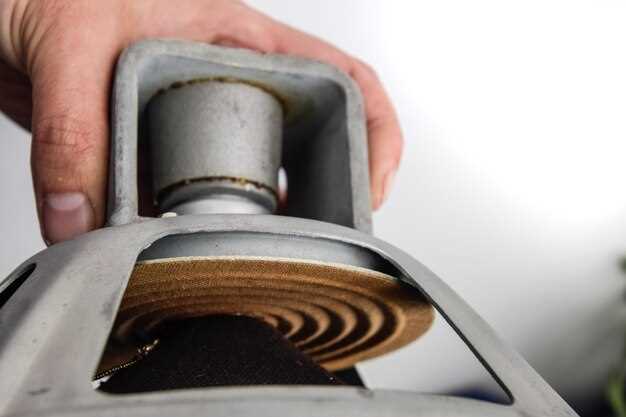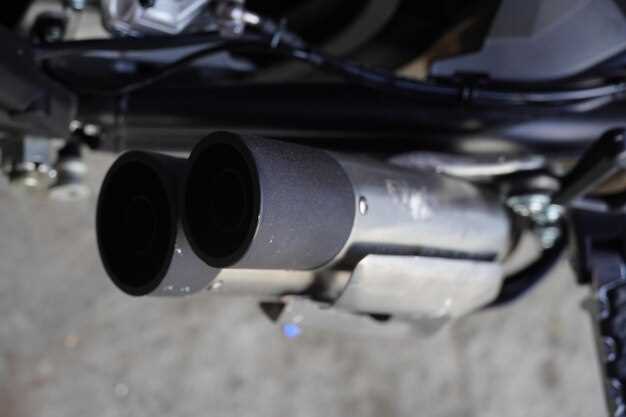
Upgrading your vehicle’s exhaust system can significantly enhance its performance, sound, and aesthetics. A custom exhaust system not only provides a personalized touch to your car but also optimizes engine efficiency and improves horsepower. Whether you’re a seasoned mechanic or a novice DIY enthusiast, this guide will walk you through the essential steps and considerations for successfully installing a custom exhaust system.
Before diving into the installation process, it is crucial to understand the components involved in a custom exhaust setup. This includes the headers, mid-pipes, mufflers, and tailpipes. Each component plays a vital role in how your vehicle performs and sounds. Selecting the right materials and designs will ensure not just a boost in performance but also longevity and reliability of the newly installed exhaust system.
In this guide, we will cover the necessary tools, step-by-step instructions, and tips for avoiding common pitfalls during the installation. Whether you’re looking to improve your vehicle’s sound profile or enhance its performance, a proper installation of a custom exhaust system is key to achieving your automotive goals. Let’s get started on transforming your ride!
Choosing the Right Exhaust System for Your Vehicle

Selecting the ideal exhaust system for your vehicle is crucial for optimizing performance and achieving your desired sound profile. Several factors should be considered to make an informed decision.
1. Vehicle Type and Model: The first step is to identify the specific requirements of your vehicle. Different makes and models may have varying compatibility with aftermarket exhaust systems. Ensure that the system you choose is designed for your vehicle type to prevent fitment issues.
2. Material Quality: Exhaust systems are commonly made from stainless steel, aluminized steel, or mild steel. Stainless steel offers durability and resistance to corrosion, making it an excellent long-term investment. Aluminized steel is less expensive but may not last as long. Mild steel, while affordable, is prone to rust and wear.
3. Performance Goals: Consider what you want to achieve with your exhaust system. If increased horsepower and torque are your primary goals, look for systems designed for performance enhancement. Systems with larger diameter piping and less restrictive mufflers typically provide better airflow, contributing to improved engine efficiency.
4. Sound Preference: Exhaust systems vary significantly in sound. Some may produce a deep, aggressive growl, while others offer a subtle, refined tone. Research sound clips and reviews to find a system that matches your auditory preferences without becoming excessively loud or droning.
5. Installation Method: Assess whether you plan to install the exhaust system yourself or hire a professional. Some systems come with detailed instructions for DIY installations, while others may require specialized tools and expertise. Ensuring proper installation is crucial for optimal performance and longevity.
6. Legal Regulations: Familiarize yourself with local laws regarding noise emissions and modifications. Some exhaust systems may exceed noise limits, resulting in potential fines or required modifications to keep your vehicle compliant.
Careful consideration of these factors will help you select the right exhaust system that fits your vehicle, meets your performance needs, and aligns with your sound preferences. Make an informed choice to enhance your driving experience.
Step-by-Step Installation Process: Tools and Techniques

Installing a custom exhaust system requires specific tools and techniques to ensure a successful and efficient process. Here’s a comprehensive guide to help you through each step of the installation.
First, gather the necessary tools. You will need a socket set, wrenches, a jack, jack stands, exhaust hangers, and a cutting tool such as a reciprocating saw or pipe cutter. Additionally, having a torque wrench can ensure all components are tightened to the manufacturer’s specifications.
Begin by safely lifting the vehicle using a jack and support it with jack stands. This provides necessary access to the undercarriage where the exhaust system will be installed. Always ensure the vehicle is secured before starting work.
Next, remove the old exhaust system. Begin at the muffler or catalytic converter and work your way back, detaching components that are held by bolts or clamps. If the exhaust parts are rusted, a penetrating lubricant can help loosen stubborn connections. Care must be taken to avoid damaging adjacent components during removal.
Once the old exhaust is out, clean the mounting points on the vehicle. This helps prevent any leaks when installing the new system. Inspect the hangers and rubber mounts for wear and replace them if necessary to ensure proper support for the new exhaust.
Now, lay out the new exhaust system components to familiarize yourself with the parts. Start the installation by positioning the front section of the exhaust system, often connecting it to the catalytic converter. Using exhaust clamps, finger-tighten the connections to allow for adjustments later.
Proceed by connecting the rest of the exhaust components, ensuring that bends and angles align correctly. Pay special attention to the outlet direction of the muffler and any tip extensions. Adjust the fitment as needed before fully tightening any connections.
Once the entire system is in place, it’s time to securely tighten all bolts and clamps using your torque wrench, following the specifications provided by the manufacturer. Double-check that each joint is secure and that the exhaust hangs at the correct clearance from the chassis and other components.
Finally, lower the vehicle and start the engine to check for leaks and ensure proper operation of the new exhaust system. Listen for unusual noises and check for any signs of leaks at all connection points. If everything is in order, take your vehicle for a test drive to ensure performance enhancements align with your expectations.
Tuning Your Exhaust System for the Desired Sound Profile
Tuning your exhaust system is a crucial step to achieve the sound profile that complements your vehicle’s performance and personality. The sound of an exhaust is shaped by various components, such as mufflers, resonators, and exhaust tips. Understanding how these elements interact allows you to fine-tune your exhaust for a specific auditory experience.
Start by selecting the right type of muffler. Performance mufflers typically produce a more aggressive sound, while stock options are quieter and more subdued. Consider the design of the muffler, as factors such as size and internal baffle configuration affect sound waves and resonance. For a deep, throaty growl, look for a chambered or straight-through muffler, which enhances the sound output.
Incorporating a resonator into your exhaust system can also modify the sound quality. Resonators are designed to eliminate specific frequencies, allowing you to customize the tone further. If the exhaust note is too loud or harsh, a resonator can help soften those edges and create a more balanced sound profile. Conversely, removing or upgrading a resonator can amplify certain frequencies, resulting in a more pronounced roar.
The choice of exhaust tips can significantly impact the final sound. Larger diameter tips often produce a more aggressive sound, while smaller tips may yield a subtler tone. Additionally, the shape and material of the tip can influence how sound resonates. For example, rolled-edge tips might produce a slightly different pitch compared to straight-cut designs.
Experimenting with pipe size is another way to tune your exhaust. A larger diameter pipe can reduce back pressure, allowing your engine to expel exhaust gases more efficiently, leading to a louder and more powerful sound. However, be mindful that excessively large pipes may result in a loss of low-end torque, which could affect performance negatively.
Finally, test the system post-installation to ensure it meets your expectations. Drive the vehicle under various conditions to listen for any unwanted noises or vibrations. Fine-tuning may require additional adjustments, such as repositioning components or swapping out parts. Achieving the perfect exhaust sound involves patience and experimentation, but the result will be worth the effort, giving your vehicle a unique character on the road.












